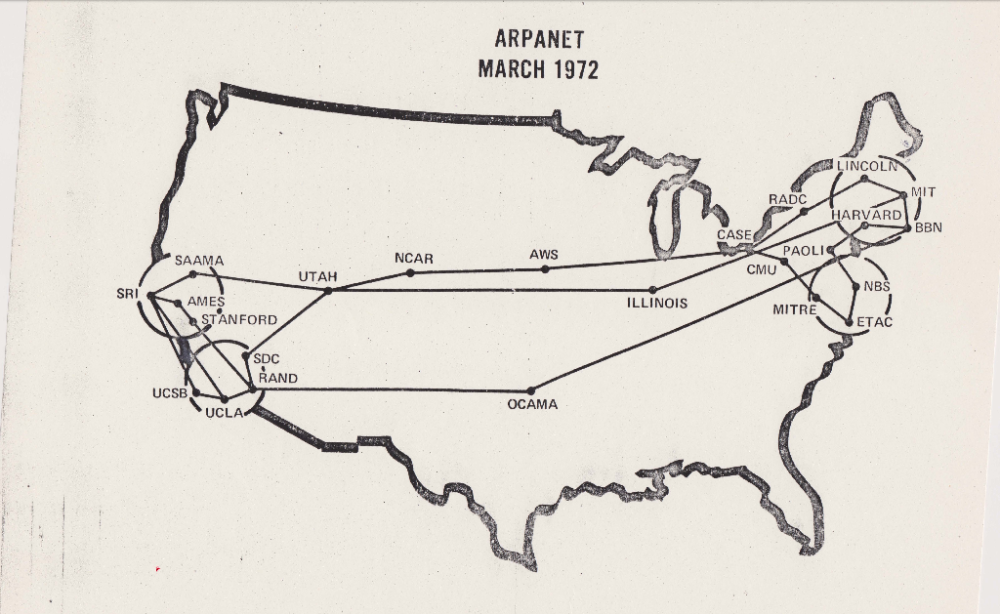The field of Computer Science can trace its origins to war. The United Kingdom funded the development of Alan Turing’s early computers to break the German Enigma Code and help win the war. We generally view this as the birth of modern computing.
As WW2 ended, the Cold War began – with America and the Soviet Union starting their build-up of nuclear weapons. And by 1957, thousands of nuclear warheads had been amassed. America was caught off guard by the launch of Sputnik – which caused an existential crisis in the American government about advances in Soviet technology and their ability to coordinate nuclear strikes. President Eisenhower created the Advanced Research Projects Agency (ARPA). The aim was to ensure that American military technology stayed ahead of the Soviets. One area of focus for ARPA was to explore the feasibility of a large-scale computer network.
As ARPA started exploring how to create a computer network, they looked to the work of Paul Baran of the RAND Corporation. There was concern that telephones and basic military command communications would not survive a nuclear attack due to their centralized nature. If a switching facility was destroyed, the network would be useless. So Baran started designing a network that could divide communications into tiny pieces – known as packets – that could be sent over a distributed network of nodes. If one node was destroyed, the system could still operate. Baran called the scheme “hot-potato routing” in his paper On Distributed Systems. This network design was the foundation of ARPANET.
By 1973, ARPANET had expanded to over 30 institutions. And many organizations were creating networks that could not communicate with ARPANET. So researchers set out to create an agreed-upon set of rules for handling data between any networked computers – regardless of what hardware or software a computer was running. This led to the creation of TCP/IP (Transmission Control Protocol / Internet Protocol) in 1974 and gave birth to the web. By the 1980s, the military portion of ARPANET became MILNET, and ARPANET evolved into the internet as we know it today.
The internet was designed to survive an adversarial threat environment.
It was designed for decentralization. It was designed to allow for permissionless peer-to-peer communication. It was designed for resiliency and censorship resistance. What originated from Cold War era pragmatism spawned one of the greatest innovations in history.
But as the web grew, it became more and more centralized. We made a tradeoff – opting for usability and ease of access over openness and decentralization. And this almost invisible force has led to the consolidation of the internet into a handful of corporate actors. They have enormous control over the source of information. And they can exert control in ways that are obvious – ex. explicit censorship – and ways that are not always apparent – ex. algorithms that determine how content is surfaced and shared.
The internet was built upon open and permissionless protocols – allowing individuals to transfer data without permission from any central authority. And now Bitcoin does the same for value.
